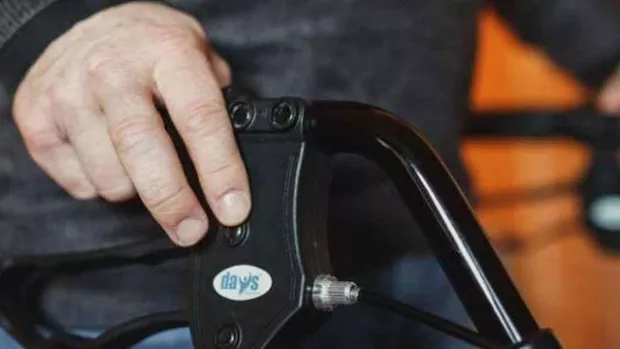
Driving and MS
One of the first questions many people have when they’re diagnosed with MS is: “Will I still be able to drive?” The good news is that most people with MS continue to drive as normal.
For more information, see the booklet Motoring with MS published by RIDC.
Find out more
The DVLA and your driving licence
If you have a driving licence, you have to tell the Driver and Vehicle Licensing Agency (DVLA) that you have been diagnosed with MS.They will assess your fitness to drive using the information you provide, and they may ask you to have a medical examination or a driving assessment.
You may be:
- allowed to keep your licence
- given a temporary licence, valid for one, two or three years
- given a licence that specifies which adaptations you need to use, or
- in extreme cases told to stop driving
See the GOV.UK website for all the information you need.
A small loss of muscle control will not necessarily affect your ability to drive a car, but you need to show sufficient dexterity to operate the car controls safely. If you need adaptations to drive, then these will be specified on your licence. You are not allowed to drive a car without them.
Memory and concentration, spatial awareness of the position of things, and clear mental processing of information, are also important to drivers. An assessment at a mobility centre can help identify and address any problems.
Insurance
You also need to tell your insurance company about your condition and about any adaptations you have.
Driving with adaptations
You may be able to continue driving an unadapted car for some time, particularly if it has automatic transmission and power steering. Bear in mind that many helpful features, such as height-adjustable seats, are now available on a wide range of models. Also, the less a car has to be modified to suit your needs, the higher its resale value.
You can use RIDC's online car search database to look for cars that suit your needs.
Mobility centres offer assessments and advice on all aspects of driving with a disability, and may be able to help you to find an instructor locally.
If you receive the higher or enhanced rate mobility component of DLA or PIP, you can use it to lease an adapted car through the Motability Scheme. They also provides grants for driving lessons.
If you’re thinking about an electric car, the website Auto Trader has an article about things to consider, including accessibility and adaptations. Read the Auto Trader article on electric cars.
Blue badge scheme
The Blue Badge Scheme allows a vehicle displaying a valid badge in the correct place and driven by a disabled person, or with a disabled person as passenger, to park more easily. The scheme is administered by local authorities and you will automatically qualify if you receive the higher or enhanced rate mobility component of DLA or PIP.
Find out more and apply for a Blue Badge on the GOV.UK website, or contact your local authority.
Sativex and driving
In England and Wales the law says that anyone found with certain drugs in their body while driving can be prosecuted, whether their driving is impaired or not.
The roadside tests the police use to check for drugs can detect very small amounts of the drug in your system. Unfortunately, this means that if you take Sativex, you may test positive for cannabis.
However, if you are taking Sativex as prescribed by your health professional, you can claim a ‘medical defence’, as long as your driving is not impaired.
The government recommend that if you are taking Sativex, that you have evidence, such as a letter from the DVLA, prescription receipt or a letter from your MS specialist, in your car to avoid any problems if stopped. If you don’t have the evidence on you, you may have to present it at a later date.
For more information, or if you have any concerns, contact the DVLA.



